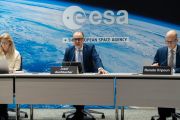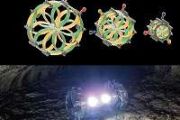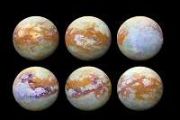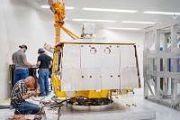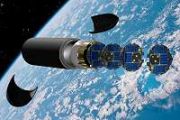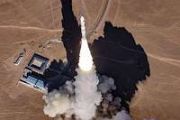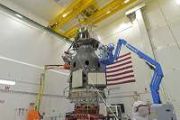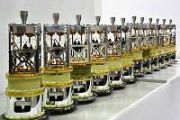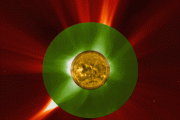
Copernical Team
DESI opens access to the largest 3D map of the universe yet
 The Dark Energy Spectroscopic Instrument (DESI) is mapping millions of celestial objects to better understand dark energy: the mysterious driver of our universe's accelerating expansion. This week, the DESI collaboration released a new collection of data for anyone in the world to investigate. The dataset is the largest of its kind, with information on 18.7 million objects: roughly 4 million sta
The Dark Energy Spectroscopic Instrument (DESI) is mapping millions of celestial objects to better understand dark energy: the mysterious driver of our universe's accelerating expansion. This week, the DESI collaboration released a new collection of data for anyone in the world to investigate. The dataset is the largest of its kind, with information on 18.7 million objects: roughly 4 million sta Cosmic ray research accelerated by machine learning insights
 The complexity of artificial intelligence (AI), particularly neural networks modeled on the human brain, often sparks apprehension due to their opaque nature. While the societal implications of such systems vary by context, Dr. Jonas Glombitza of the Erlangen Center for Astroparticle Physics (ECAP) at Friedrich-Alexander Universitat Erlangen-Nurnberg (FAU) underscores a unique contrast. He notes
The complexity of artificial intelligence (AI), particularly neural networks modeled on the human brain, often sparks apprehension due to their opaque nature. While the societal implications of such systems vary by context, Dr. Jonas Glombitza of the Erlangen Center for Astroparticle Physics (ECAP) at Friedrich-Alexander Universitat Erlangen-Nurnberg (FAU) underscores a unique contrast. He notes Chile reviews Chinese observatory plans slammed by US
 Chile said Wednesday it was reviewing an agreement for the construction of a Chinese astronomical observatory on its soil, a project that has drawn criticism from Washington as it jostles with Beijing for influence in Latin America.
Under an agreement signed by President Xi Jinping in 2016 with Chile's Catholic University of the North (UCN), the Ventarrones Astronomical Park was to be built
Chile said Wednesday it was reviewing an agreement for the construction of a Chinese astronomical observatory on its soil, a project that has drawn criticism from Washington as it jostles with Beijing for influence in Latin America.
Under an agreement signed by President Xi Jinping in 2016 with Chile's Catholic University of the North (UCN), the Ventarrones Astronomical Park was to be built ESA's Euclid spacecraft unveils 'gold mine' of new scientific data
 The European Space Agency's spacecraft Euclid on Wednesday released a treasure trove of new data in its quest to map and unlock mysteries of what scientists call the "dark universe."
New data included deep-field space imagery and snapshots of thousands of different and distant galaxies that revealed the structure of the so-called "cosmic web." It also included survey of some 380,000 gal
The European Space Agency's spacecraft Euclid on Wednesday released a treasure trove of new data in its quest to map and unlock mysteries of what scientists call the "dark universe."
New data included deep-field space imagery and snapshots of thousands of different and distant galaxies that revealed the structure of the so-called "cosmic web." It also included survey of some 380,000 gal Beyond expectations SKA-Low unveils its first cosmic snapshot
 The SKA Observatory has released the inaugural image from its Australian-based SKA-Low telescope, marking a pivotal moment in the project's journey to deliver an unprecedented view of the cosmos.
Captured using an early configuration of just 1,024 antennas out of a planned 131,072, this image offers a compelling preview of the discoveries that lie ahead for what is set to become the world'
The SKA Observatory has released the inaugural image from its Australian-based SKA-Low telescope, marking a pivotal moment in the project's journey to deliver an unprecedented view of the cosmos.
Captured using an early configuration of just 1,024 antennas out of a planned 131,072, this image offers a compelling preview of the discoveries that lie ahead for what is set to become the world' How Altegrio is Redefining AI Development Services
 AI is one of the most popular and controversial topics discussed today, not only in tech-focused media. We decided to find out what running an AI development company is like today. To do this, we interviewed Oleg Goncharenko, a man who has been in charge of such a business for almost 15 years. Oleg himself is an entrepreneur with over 25 years of business experience, 15 of them in tech businesse
AI is one of the most popular and controversial topics discussed today, not only in tech-focused media. We decided to find out what running an AI development company is like today. To do this, we interviewed Oleg Goncharenko, a man who has been in charge of such a business for almost 15 years. Oleg himself is an entrepreneur with over 25 years of business experience, 15 of them in tech businesse Spaceo leads ESA project to deploy inflatable sail for satellite disposal
 A European initiative spearheaded by Portuguese start-up Spaceo has secured a European Space Agency (ESA) contract to create a novel solution for clearing obsolete satellites and debris from orbit.
The program, called SWIFT (Spacecraft With Inflatable Termination), has received euro 3 million in funding to develop a deployable sail-like structure that acts as a drag device to hasten the d
A European initiative spearheaded by Portuguese start-up Spaceo has secured a European Space Agency (ESA) contract to create a novel solution for clearing obsolete satellites and debris from orbit.
The program, called SWIFT (Spacecraft With Inflatable Termination), has received euro 3 million in funding to develop a deployable sail-like structure that acts as a drag device to hasten the d 332nd ESA Council: Media information session
 Video:
00:34:08
Video:
00:34:08
Watch the media information session in which ESA Director General Josef Aschbacher and ESA Council Chair Renato Krpoun (CH) update journalists on the key decisions from the ESA Council meeting, held at ESA Headquarters in Paris on 19 and 20 March 2025.
Read ESA's Strategy 2040

ESA's Strategy 2040
Read the Five Goals
Hera’s incredible adventures in brick building
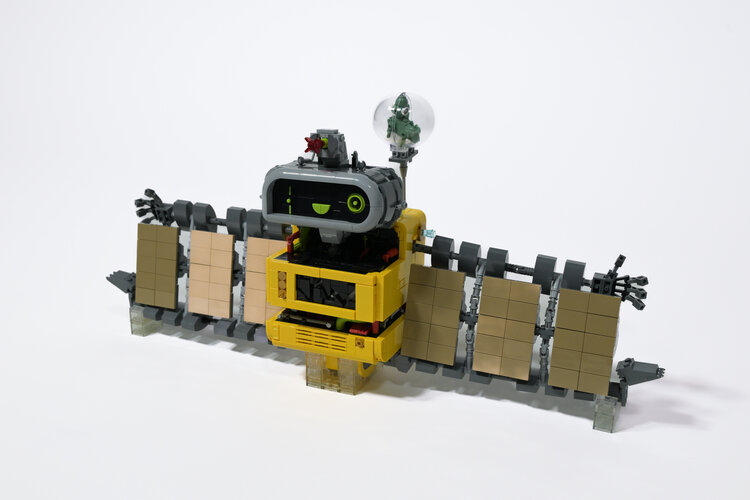
After a hectic four years of work ESA’s Hera mission for planetary defence was launched into space and has just flown by Mars. As a keepsake of the spacecraft they channelled so much effort into, the Hera team also commissioned the building of a detailed model made with LEGO® bricks – as well as smaller variants that you can go ahead and build for yourself!

